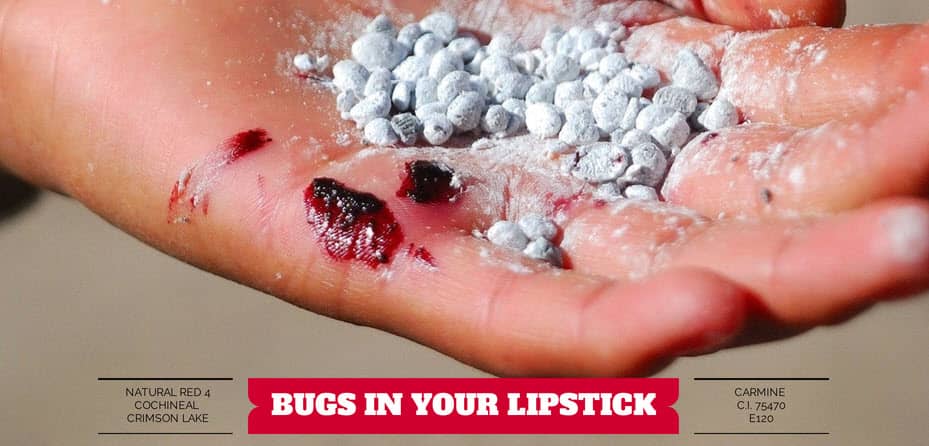
What Healthcare Facilities Need to Know About Pest Control
09/03/2021
Healthcare facilities, such as hospitals, nursing homes, rehabilitation centers, and emergent care centers must maintain a strict level of sani...
READ MORE >
08/13/2014

Your skin, your largest organ, is capable of absorbing 60% of what it comes in contact with. Cleaning products, cosmetics and pharmaceuticals are all products that can be rapidly absorbed through your skin’s surface. Naturally, these also account for most of the hazardous agents we use day to day.
Do you really know what you’re putting on your face, let alone down your throat?
Many women will go to great lengths to feel beautiful and the cosmetic companies know this. Did you ever consider that your favorite shade of lipstick carries known cancer-causing agents along with unlisted contaminants like lead and mercury? Yep, it’s true. Not to mention a laundry list of ingredients with elusive names like propyl paraben and oxybenzone—both scoring above an 8 on the Environmental Working Group's no-no list.
One natural (yet allergy-causing) ingredient used as a food dye additive and found in shades of red lipstick is carmine. By and large, it’s considered to be one of the safer, naturally-derived ingredients found in lipstick, juices and even a Starbucks Strawberry Frappuccino. It might be a welcome alternative to synthetic colorants if you’re not allergic to it and you don’t mind eating bug parts. If you’re a vegetarian/vegan or follow either a kosher or halal diet, products containing carmine are not likely the right choice for you.
What exactly is Carmine?
Carmine is the dark red pigment derived from crushed cochineal (scale) insects. Cleopatra, rumored to have created the first true “lipstick,” did so by staining her lips with a paste of crushed ants and cochineal insects. The insects themselves lead an inconspicuous life of feeding on cacti, which serve as the insects’ host. In cosmetics the ingredient is listed as any of the following: carmine, cochineal, natural red 4, crimson lake, C.I. 75470, and E120.
While allergic reactions to carmine range from mild to severe, it wasn’t until 2006 that the FDA required manufacturers to list it as an ingredient in food and cosmetics.
There’s also a whole lot of science and math that goes into calculating the risk in exposure to products like these and their contaminants, like lead, for instance. In this context, “Exposure,” is a complicated formula that looks something like this:
![]()
Say whaaaaaa?
While it’s a far cry to say that the average woman eats between 4 and 9 pounds of lipstick in her lifetime (really?—the internet says so, so it must be true!) it still might be a good idea to consider the pitfalls of using cosmetics without really knowing what’s in them. So the next time you whip out your go-to tube, take a good look at the list of ingredients. You might just have been duped by its marketing if its anything other than “bug juice red.”

09/03/2021
Healthcare facilities, such as hospitals, nursing homes, rehabilitation centers, and emergent care centers must maintain a strict level of sani...
READ MORE >

05/17/2021
May is National Lyme Disease Awareness Month, a chance for pest control professionals to spread information on how to prevent Lyme and tick-bor...
READ MORE >

09/08/2020
Fulton, MD, August 31, 2020—American Pest, Washington DC’s leading provider in modern, preventative pest management, acquires Atlas Ext...
READ MORE >

05/04/2020
Hopefully, we all know at least a little bit about how the lack of pest control can contribute to the spread of disease. Probably the most famous e...
READ MORE >

Protect your home and family from nuisance and potentially damaging pests with a Preferred Care home pest control plan. Starting at $49/month

Don't let the bed bugs bite a second longer. Contact American Pest for the most comprehensive bed bug control in the industry. Learn More

Our certified rodent control pros will put an end to your frustration by getting rid of rats and mice inside your home. Learn More

Say goodbye to wood-destroying termites in your home when you contact American Pest for expert termite control. Learn More

Trust American Pest to deliver professional backyard tick control services that are guaranteed to get results. Learn More

Don't spend the warm-weather season indoors, find out how American Pest's professional treatments get rid of mosquitoes. Learn More
Fill out the form and recieve feedback in less than 5 minutes. For immediate service please call.